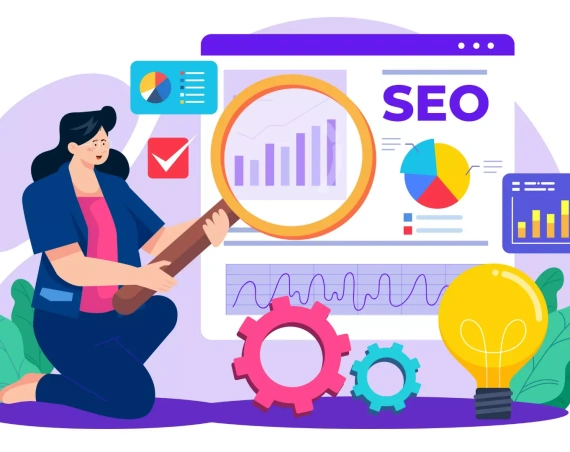
Etsy SEO: What Every Seller Needs to Know
As an Etsy seller, one of your most important jobs is getting people to view your product pages. After all, you can make as many products or units of products as you’d like, but if nobody is buying it, you won’t make money. Unsurprisingly, slow sales are a common reason why businesses fail, even on Etsy.
While it’s easy to think that customers will be attracted to your products simply because of the great photography and no-nonsense product description, this is far from the truth. That’s because Etsy has millions of items, many of which can be similar. Furthermore, you must ensure that your products show up on a potential buyer’s results page when they look for a product like yours.
In many ways, the process of having your products show up on Etsy search pages is similar to what you do to get noticed on Google, just with fewer competitors. Simply put, to have your products discovered, you need to learn about and practice proper Etsy SEO.
This article will discuss the basics of Etsy SEO and how it works by defining and explaining the various terminology used by Etsy. In the end, you’ll be better equipped to compete with other sellers in your niche.
What is Etsy SEO?
Chances are that you are already familiar with SEO, also called search engine optimization, even if you don’t know the terminology. Briefly, SEO is the process through which website owners try and get their content placed as high as possible on search engine results. Search engines, such as Google, Bing, or Etsy, use keywords and other factors to determine what content is most relevant and useful for the person who is searching. In
It’s important to notice that Etsy uses its own search engine technology. While Etsy pages are typically indexed by Google and, therefore, frequently show up in Google Shopping results, Etsy’s rankings are more specific. Trying to rank a page that sells craft materials is very different from ranking a similar page that contains athletic socks. Furthermore, certain product types may have special terminology that could be confused with something else.
Of course, Etsy also only wants to show products sold on its website. For this reason, mainstream search engines can only help so much. Because Etsy has a distinct search engine function, you need to know how to optimize your pages specifically for Etsy. Many of the SEO principles are the same as other search engines, while others are different.
Basic Etsy SEO Terminology
If you want to understand how Etsy SEO works, you need a basic grasp of the terms Etsy and other professionals use. Then, you can move forward and learn how various factors work together and determine a product’s rank on results pages.
Keywords
Simply put, a keyword is a basic word or phrase that indicates what somebody is looking for. For example, “vintage engagement ring” is a keyword. Somebody who wants an engagement ring might search for just this term, or they might expand their see phrase to include something specific, like “vintage diamond engagement ring Rose gold.”
Relevance (or relevancy)
Relevance describes the degree to which a listing matches the keyword or search intent of an Etsy user. So in our example above, a listing for diamond earrings may be related (because it’s another piece of jewelry often associated with weddings), but it isn’t directly related to an engagement ring purchase. On the other hand, a wedding band has more relevance.
Ultimately, Etsy will usually only show engagement ring results for this search. That may also include vintage-inspired ring settings and handcrafted imitations, but likely not much else.
Query (or search)
The query or search is the actual terminology that people type into a search engine. That’s true whether you’re talking about Etsy, Google, or something else. A search engine Then takes this information and matches it with indexed websites or, in this case, Etsy listings.
Ranking
In SEO, ranking refers to the order in which an item appears on the results page. In other words, rank one is what people will see course after the sponsored listings. This is a bit different with Etsy because there’s usually more than one entry per line. Either way, you want the highest possible ranking because people typically click through one Of the first items they see.
How SEO works on Etsy
Many aspects of SEO are the same on Etsy as any other website or the Internet as a whole. However, there are some specific differences in practices between Etsy and the wider web. If you have a freestanding website, you will recognize most of this.
Step 1: Sellers add keywords
Before Etsy’s search engine can help anyone find a product listing, the sellers must help categorize and describe their products. That help comes in the form of keywords added throughout the listing. In other words, the headline or title isn’t the only place you should add keywords. Rather, you should give the search algorithm as many chances as possible to correctly categorize and rank your wares.
Here’s where you can add keywords:
- Listing title
- Product description
- Tags
- Attributes
- Categories
Interestingly, Etsy Didn’t use product listings until recently. Now that descriptions count, consider repeating the most important keywords in that section. It’s a great way to help people learn about your product while also increasing your listing’s visibility.
Step 2: The Etsy algorithm indexes your listings
Using your keywords and tags, the Etsy algorithm will now add your products to the most appropriate categories. Then, it will store the data for later when an Etsy user may want to view your listing. As an added bonus, Google will also index your pages and display them on results pages as appropriate.
Step 3: Query matching
When someone searches for a particular keyword, the Etsy algorithm looks for all listings that match the keywords. At this point in the game, the only thing that matters is whether or not a particular product has a basic description that matches. More subtle differences between the listings do not matter until the next step, so this phase has the widest variety of listings.
Step 4: Ranking
Finally, the Etsy algorithm ranks its results based on relevancy. This means that the similarity between a product and the keywords used helps determine how high on the page (and which page) each listing will appear. Returning to our engagement ring example, a genuine vintage ring may rank higher than a handmade vintage-inspired reproduction. That’s because the tags for each ring should indicate which category the product belongs to. Similarly, the seller of the reproduction will likely include the terms “reproduction” or “vintage-inspired” to differentiate that product.
In this situation, it’s important to note that both product types are relevant to the search. In fact, somebody who runs a search of this type may wish to see both options — or find that the reproduction works better for them. This could be especially true when a potential customer doesn’t see a genuine vintage ring that they love.
How to optimize your listing for Etsy SEO
Now that you understand how Etsy SEO works on a theoretical level, let’s put this knowledge into practice. In a nutshell, the idea is to use the right keywords in the best places to convince the algorithm that your products are the most relevant for your target query.
Before we begin, it’s important to remember that you cannot have a listing pop-up on the first page of every relevant search. That’s because each query is a little bit different. Therefore, if you have some closely related Etsy listings, then you should spread the keywords out between them so that more people will see your products.
With that in mind, here’s the process.
Step 1: Write a natural and compelling title
Above everything else, remember that a human will ultimately read your title and decide if they will click through to the product page. For this reason, your title should be natural and compelling, even as it includes keywords for the Etsy search engine.
For a title to be natural, it should be descriptive without being overwhelming. It should also avoid repetitive terminology because repetition can annoy human readers. Therefore, you should always write a title that will make sense to the reader and encourage them to view the item description.
Besides repetition, you should also avoid keyword stuffing. This is an old SEO practice that involves using several variations of the same keyword close together. An example might be “Vintage engagement ring in white gold vintage inspired.” Or maybe, “Leather wallet for men, monogrammed wallet, personalized wallet, gift for him.” Here, the writer is trying to get their wallets on as many search pages as possible.
Guess what? Keyword stuffing is unnecessary. That’s because Etsy’s algorithm is sophisticated enough to show people results that include this theoretical wallet, whether the query asks for monogrammed or Personalized wallets.
The best advice is to think about what you would type into the search bar if you wanted the same thing, then write your title around it.
Step 2: Include tags
While tags may seem tacky at first, they’re an important way to include keywords that you didn’t use in the title. In that sense, they are like hashtags on social media.
When you add tags, be sure to include everything that describes your product. This will help the algorithm show your product to as many people as possible without losing relevance.
Step 3: Don’t forget the categories
On Etsy, a category is more general than a tag. However, it still helps you describe the products you’re selling and determine relevance to a query. Examples of a category from our examples above include wallet, engagement ring, and vintage. Then, you can add subcategories that make your listing more specific, such as “diamond engagement ring” or “leather wallet.” Here, you’ll have some overlap from the title.
Step 4: Attributes help too
Another opportunity to add keywords for Etsy SEO is in the attributes section. Attributes are descriptors of your product, including things like color, size, and use. For instance, you might have a pink flower vase, a brown leather wallet, or an Art Deco ring, size 5. You can also include attributes that you don’t include anywhere else, like the shade of pink. Any of these items can help your item rank higher in a search query, or even rank in situations where it wouldn’t have because of your description not including a keyword.
Step 5: Descriptions help make a good impression
Here’s the thing – descriptions weren’t included in Etsy rankings until recently. However, Google and other “outside” crawlers have always looked at the description. To write a good one, consider the guidelines for titles above. You want something short, sweet, and to the point while also remaining compelling. Also, be sure to include your most important keyword (or a few, no stuffing) to help your item rank higher for relevant searches.
Other Etsy SEO factors
While your product descriptions and listing details are important for Etsy SEO, there are several other factors that help determine your product rankings. Some of these affect all of your listings the same way.
In particular, Etsy considers the likelihood that a searcher will buy a particular item, especially against competing listings. For instance, if your listing is translated from another language or you’re in a different country from the searcher, this can hurt your ranking. On the other hand, that effect is likely less for specialized listings or rare items than it would be for keywords with lots of competition.
Similarly, Etsy considers your listing and shop quality. If you’re a seller with especially good or bad ratings, this will influence your ranking up or down, respectively. High or low shipping charges can have a similar effect, especially if a competitor offers free shipping. More recent listings often prevail over older ones, too, since shoppers might be looking for new items since the last time they searched.
Finally, shopper habits are a factor. Especially if someone buys a lot from Etsy, the algorithm already understands their preferences. Because Etsy wants to see goods sold, they will display the results that their data indicates will be most attractive to a particular customer. Sadly, this is one thing that you don’t have much control over.
Final thoughts
Etsy SEO follows the same principles as SEO across the web. However, because Etsy is an e-commerce site, it uses specialized methods to harvest keywords and index listings. This ensures customer satisfaction and gives sellers a better chance to get business when they follow the rules. With a little practice and our tips, you should quickly master the controllable aspects of Etsy search. Then, you can watch your shop grow through increased traffic.

